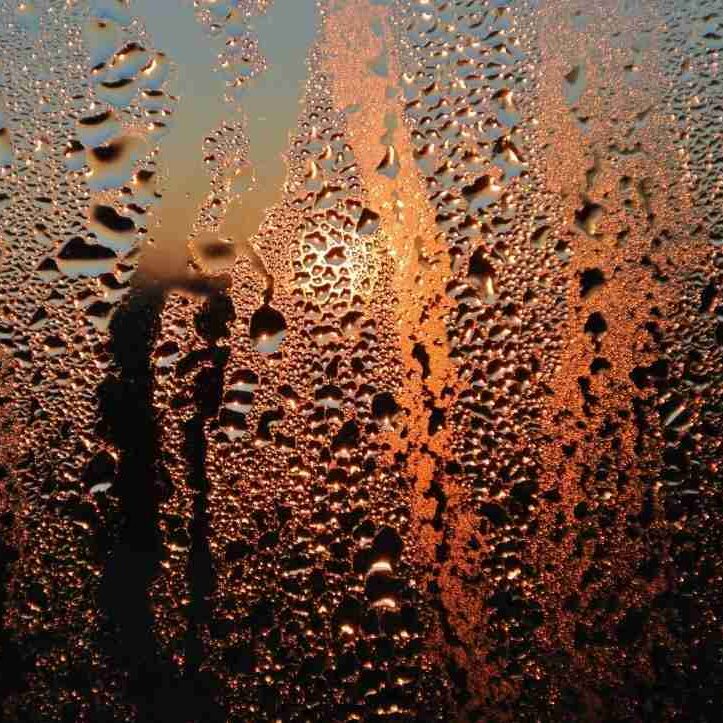How to Stop Condensation And Moisture Buildup In Your Camper Van
Updated on: July 2024
When the cold weather starts, vanlifers can get a lot of condensation. This happens when you spend time in a tent, RV, or camper. The problems caused by condensation are the same in all of these cases.
Moisture over time can lead to dampness, mold, and rust. This makes it unpleasant. You can get rid of the water vapour by following some ideas in this article.

What is Condensation?
Before we can figure out how to stop condensation in a van, it’s essential to know what it is and why it occurs.
condensation happens when humid air comes into contact with something cold, turning the water vapor into liquid.
The following three factors need to be considered:
- Relative humidity
- Water vapor sources
- Dew point
Humidity, Condensation And Dew Point
Relative Humidity
The amount of water vapour that air can retain before it becomes saturated is referred to as its saturation level. When the air is fully saturated, it cannot contain any more water vapor.
The humidity is determined by temperature. The higher the temperature, the lower the relative humidity and the more water vapour the air can hold. Condensation will form less if there is more water vapour in the air. As a result, we must raise temperature to decrease relative humidity.
Water Vapour Sources
When you’re in the van on a chilly day, it’ll be warmer inside than outside since you’re in it. Your own body heat will raise the temperature as well as any cooking or usage of an electric heater.
In theory, this is a good thing; however, there’s more to it. Living in a van produces water vapor as well, thus raising the humidity level.
Adults can produce up to 500ml of water each night just from breathing. Water vapour enters the van through wet clothes and boots, cooking, showering, cleaning, and propane usage.
The absolute humidity rises as the temperature rises, but so does the relative humidity due to increased saturation in the air.
Dew Point
The temperature at which water vapour becomes saturated with air is known as saturation temperature. Warm air containing a significant amount of water vapor comes into touch with a chilly surface, such as a cab window.
The dew point reduces the ability of warm air to hold water vapour. When the water vapor reaches a certain level, it becomes liquid and forms condensation.
The dew point is the point at which this happens.
Where Can Condensation Form
Water molecules are present in every breath of warm air and your body continuously discharges water vapour.
The heat from your skin and breathing produce moisture in the air. This happens a lot when you are cooking, running a heater, or walking around. When this happens in an enclosed environment, like a campervan, it can build up quickly!
Adding warmth to your living space will quickly increase the temperature and humidity in the air. When the temperature difference between indoors and outdoors is large, condensation will form on cold surfaces.
If you see a lot of moisture on your windows, it might be because the area is not properly sealed. Moisture can also form on walls and roofs if they are not sealed either. When droplets gather together, they may create wet areas that turn to mould or rust if not treated right away.
How To Prevent Condensation
You can prevent condensation from happening in your van by having proper ventilation. This means that you need to let in a fresh stream of cold air and let out warm air. It’s especially important to do this when there is moisture in the air, for example when you are cooking or heating.
In the winter, opening some windows may not seem like a good idea. But other techniques such as dehumidifiers and moisture absorbers will not be successful. Humidity needs water to work, which is not possible in a small space like a van.
Adding Proper Airflow To Your Camper Van
The goal is for your vehicle to have two ventilation holes. These should be kept as far apart as feasible so that fresh air may flow throughout the van. Ventilators and a cracked window are excellent choices for removing moisture.
Opening a window by itself will not completely remove moisture from your car. You need to circulate the airflow in order to get rid of all the humidity.
Installing a 12volt ventilation fan in your ceiling is not very difficult. The hardest part will be cutting a hole in the roof. Proper ventilation can be helpful during the summer when it’s hot, and all year long.
Another way to reduce condensation is to use a window fan or battery-operated/DC-powered fan. You will need to remember to turn it on before bedtime or during periods of high activity, but it is still a good option.
Prevent Condensation With Dry-Heat
This may not work for everyone, but if you want to keep your van warm in the winter, a wood stove may be a good option. It will dry out the air and help to prevent condensation from forming on your windows.
Wood stoves are a very cost-effective way to heat your home. They also take moisture out of the air, which can be helpful in winter months. You may need to add water to the air by boiling a pot of water on the stove.
Externally Ventilated Air Heaters
If you have the money, an externally vented heater is a great way to keep warm in the winter.
These heaters use fuel from storage tanks to pump humid air and combustible gases out of the vehicle’s exhaust to keep the van warm.
Propane heaters are popular because they use less electricity and water than other heating methods. Propane heaters also produce significantly less water vapor than other heat sources, which makes them more environmentally friendly.
Adding A Vapour Barrier
Vapor barriers can be confusing. When installed correctly, they are effective at stopping condensation.
However, this is nearly impossible in a van, so ventilation will still be needed to keep the air fresh.
A vapor barrier should be used in conjunction with ventilation. It is a thin sheet of plastic that is installed on the warm side of the insulation. This will help to keep moisture from passing through the insulation and into the living space.
Keeping your camper van moisture-free can be a challenge, but with the right tools it can be done.
A vapor barrier is the best way to stop water from building up in your home, but it can be difficult to install it correctly. There are many different materials that can act as a vapor barrier, such as polyiso, XPS, spray foam, and Thinsulate insulation. All of these materials don’t let water through them.
If they are not sandwiched between two other moisture-resistant materials, condensation can move behind them and rust or mould form.
Ricks Of Condensation
You don’t want condensation to accumulate in your van. This is a problem that should be addressed during the van-building process.
Excess moisture can quickly turn into mould, which is hazardous to one’s health. Mould exposure can cause skin irritation, eye problems, and throat discomfort.
Even a tiny quantity of untreated moistness can lead to rust and corrosion. This can ruin metal and destroy your van’s body and frame.
It is best to reduce condensation from forming in the first place rather than trying to fix it later on. Doing this requires a combination of insulating, trapping warmth, ventilating moisture, and sealing potential leaks.
Condensation can be prevented by maintaining adequate ventilation. Constant air exchange makes you more comfortable. Make sure all walls and ceilings are fully sealed. If everything else fails, open the windows!

